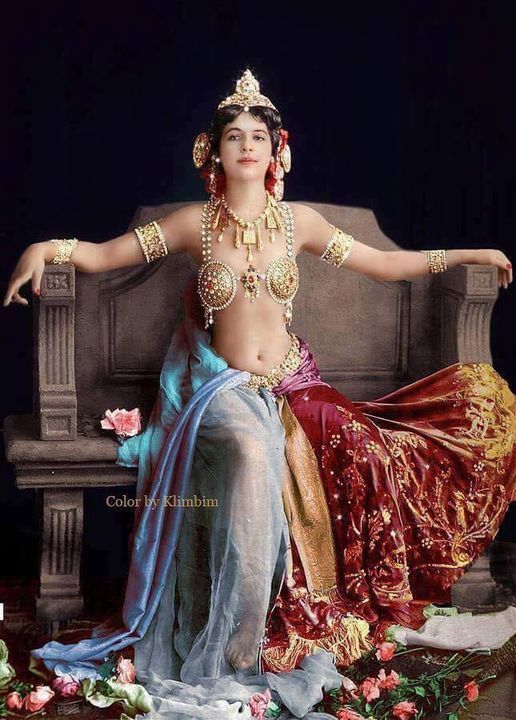#1876 mata hari
Text
Happy Birthday, Mata Hari...
Today (August 7th) is the birthday of Margaretha Geertruida Zelle MacLeod-- the dancer, sex symbol, and spy better known as Mata Hari. What scent best suits the occasion? Perhaps the ghost of the guest of honor will guide my hand...
First, a bit about Margaretha. Forcibly transplanted to colonial Java by a philandering husband, this young Dutch-born mail-order bride found comfort in studying traditional Indonesian dance. A local dance troupe proved supportive-- as did one of her husband's fellow Army officers, with whom she absconded from her marital prison. In 1897, she renamed herself "The Eye of the Day" and freed herself from domestic bondage for once and for all.
Today, we remember Mata Hari as an infamous World War I double agent whose life ended in front of a firing squad. But in her heyday, she - alongside Isadora Duncan, Loïe Fuller, and Ruth Saint Denis - ushered in an era of "sacred dance", which incorporated tribal, ceremonial, and contemporary movement, fusing East and West.
In fact, it's this sense of emerging from one matrix to immerse oneself in another that makes Mata Hari and Guerlain's Elixir Charnel Oriental Brûlant a heavenly match. At once simple and sumptuous, Oriental Brûlant excels at bridging cultures through scent as deftly as its namesake did through dance.
It begins with a dense sweet top note that says "vanilla" in as many languages as it can. As it progresses, it becomes more transparent, ascending from deepest plum to the aforementioned misty mauve, where it seems to pause and hold its breath. There it remains for hours and hours-- comforting, reassuring, never cloying or annoying, a mystical scent meditation.
Inasmuch as Spanish jijona turrón, Italian torrone, French nougat, German marzipan, Czech turecký med, Israeli halvah, Turkish loukhoum, Indian halwa, Japanese yōkan, and American fudge all lie on the same confectionary spectrum, one can trace the path of a single idea spurred by common hunger across a hundred national boundaries in its quest for manifestation. And actually, candy isn't a bad metaphor for Oriental Brûlant, which smells like an imported sweet concocted from honey, orangeflower water, and almond paste layered between fragile sheets of rice paper. It's an uncommon dessert of the high-calorie variety. It may be an acquired taste for some, but not me-- I was charmed by it from the first.
A side note: Oriental Brûlant is tinted pale mauve, a hue historically associated with a number of contradictory social conventions. Invented in 1856 by Sir William Henry Perkin, "mauveine" dye became popular as a half-mourning color for women in transition from a state of bereavement. By the Gay Nineties -- dubbed the "Mauve Decade" by social essayist Thomas Beer -- the color had amassed a following among artists, poets, and mystics whose social and sexual mores ran counter to those of the establishment. Oscar Wilde, Aubrey Beardsley, Aleister Crowley… and of course Mata Hari.
____________
In my perfume travels, I have found to my dismay that all saffron perfumes smell alike in the end. What seemed extraordinarily novel the first time I encountered it (in Olivia Giacobetti's Safran Troublant, to which I remain imperishably hooked) now seems as uniform as if die-stamped by machine.
Time and again, saffron is paired off with the same old partners -- rose, cardamom, steamed milk, sandalwood -- only to end up carrying them all on her broad back. I'm certain she gets weary of these arrangements, but is too mild-mannered to say so. Like a superhero recruited not to some global justice league but the local PTA, she gamely offers to run the next bake sale, knowing full well she'll end up saving the world.
What if saffron took a holiday?
Histoires de Parfums' 1876 Mata Hari is one of the best saffron perfumes I've ever smelled... only it doesn't have a lick of saffron in it. All of her usual dance partners have gathered in one place to scratch their heads at the saffron-shaped vacancy in their midst. Where is she? they're thinking. Not me: I'm getting too big of a kick out of watching the gang sweat bullets at the prospect of doing all the heavy lifting.
Luckily, everyone pitches in and gets this baby off the ground. Rose and sandalwood know all the steps, and lychee provides the fresh perspective of a newcomer to the scene. Substitute cumin for cardamom? Yes, please-- it makes for a slightly more ballsy drydown in place of the usual oeufs à la neige. All together, 1876's components do such a good job of filling in for the missing piece that you'd swear she was present and accounted-for the whole time.
If Guerlain's Oriental Brûlant is our antiheroine all dressed up in her stage costume (beads dripping, headdress sparkling), I'd have to say that 1876 is Mata Hari in civilian clothes. To be sure, they are beautifully cut, perfectly proportioned, and wildly expensive as befits the wardrobe of a demimondaine-- but they are unobtrusive enough to allow her to pass through society without attracting too much attention. So skillful is 1876's air of olfactory misdirection that, applied with a light touch, it could make the wearer damn near invisible.
But perhaps that is exactly what you want. After all, a good spy does well to remain incognito.
Scent Elements: Tonka bean, almond, vanilla, styrax, clementine (Elixir Charnel Oriental Brûlant); bergamot, orange, lychee, rose, iris, violet, carnation, cumin, cinnamon, vetiver, guaiac, sandalwood (1876 Mata Hari)
#elixir charnel oriental brûlant#guerlain#1876 mata hari#histoires de parfums#parfümieren#perfume review
2 notes
·
View notes
Text
August 7th 1876: Dutch sex worker and spy Mata Hari was born.
August 7th, 1876: Dutch sex worker and spy Mata Hari was born.
0 notes
Text
On This Day In History
September 7th, 1876: Dutch exotic dancer and spy Mata Hari was born.

431 notes
·
View notes
Photo

Mata Hari, 1876-1917, Dutch courtesian and spy, before blowing her executioner a kiss
249 notes
·
View notes
Text


hello lovers here’s what i’m selling 🌝
Michael Kors White Luminous Gold 3.4oz 98% full- unique designer green amber - $18
Banana Republic Dark Cherry & Amber 2.5oz 95% full - sweet cherry blossom amber, alleged BR540 dupe - $26
Goutal Un Matin d’Orage EDP 1.7oz 90% full - dense creamy gardenia - $42
Guerlain Mon Guerlain EDP 3.3oz 90% full - Guerlain’s take on a mall vanilla with lavender and tonka - SOLD
Vintage Lancôme Magie Noire 1.7oz 30% full - classic floral chypre with a spice oriental base - SOLD
Olympic Orchids Ballets Rouges 1oz 85% full - modern rose chypre, roses and 🚬 - $36
Goutal Rose Splendide 3.4oz 95% full - grandma’s rose bush with the subtle sweetness of pear - $40
Bottega Veneta EDP 1.7oz 95% full - modern leather chypre with oakmoss and patchouli - SOLD
Histoires de Parfums 1876 Mata Hari 2oz 75% - femcel’s musty bedroom, spicy woody rose with cumin and lychee - SOLD
Etro Dianthus tester 3.3oz 70% full - powdery, creamy, and softly spicy carnation with vanilla - $38
Mugler Womanity 2.7oz 98% full - ocean air and fig leaf - SOLD
Lolita Lempicka Green Lover 3.4oz 98% full- gin & tonic vanilla - SOLD
Lolita Lempicka Lolitaland tester (no cap) 2.7oz 95% full - ultra sweet peach Bellini gourmand - $22
Lolita Lempicka L L’aime 1.35oz 95% full - citrusy floral sandalwood musk - $13
Gaultier Ma Dame EDP 1.6oz 90% full - fresh, sporty rose patchouli - $20
Paul Smith Rose 3.3oz 85% full - fresh dewy rose à la Roses de Chloe - $26
Rogue Perfumery Chypre Siam 1oz 90% full - inspired by the original chypre, Coty Chypre, this is shades of green: kefir lime, basil, oakmoss with warmth and richness from ylang ylang and civet - SOLD
DSQUARED She Wood 3.4oz 98% full - fresh violet cedar - $54
Vintage Dior Dune 3.4oz 55% full - drift wood oriental, featuring rosewood and sandalwood - SOLD
Bvlgari Petits et Mamans 1.3oz 65% full - alcohol free soft chamomile vanilla musk - SOLD
Montale Dark Aoud 3.4oz 95% full - smoky dry woods with leather, vetiver, and sandalwood - SOLD
DM if interested 🌞
Shipping was factored into the cost.
Payment preferred through Venmo or Paypal. If on Paypal, please select that this is a personal friends & family payment, not a goods or service payment so I don’t get TAXED!!!! please and thank you.
69 notes
·
View notes
Text
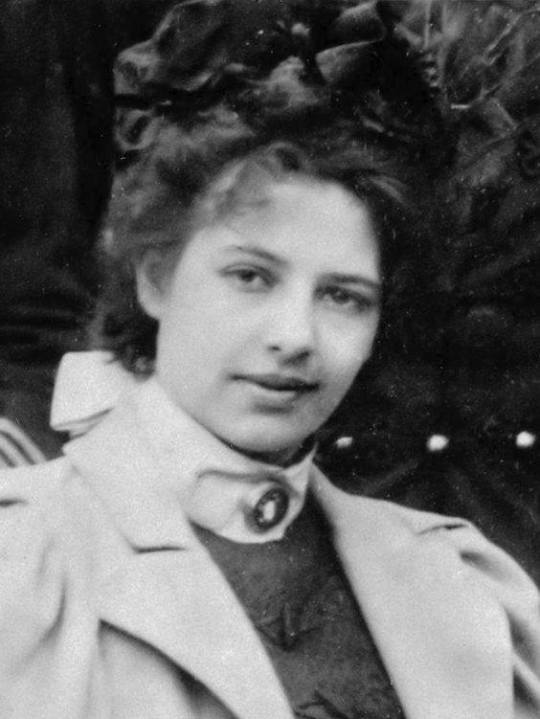



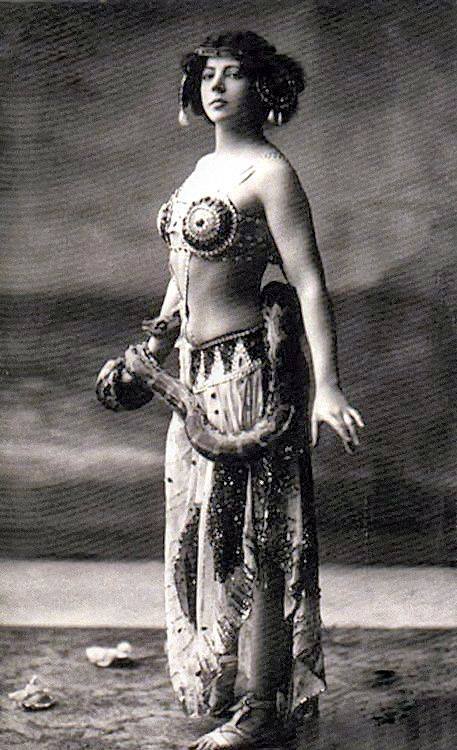
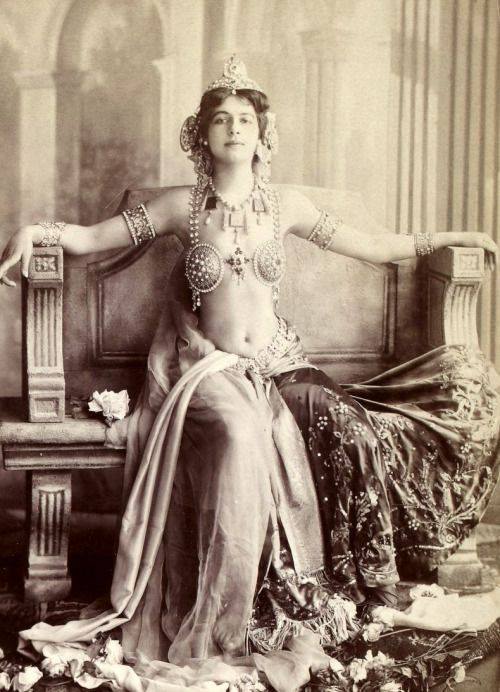

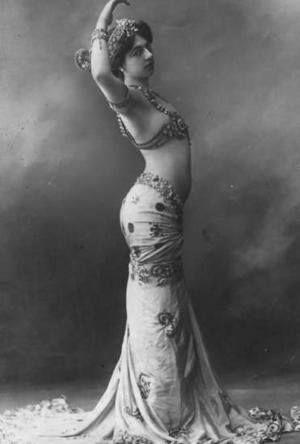

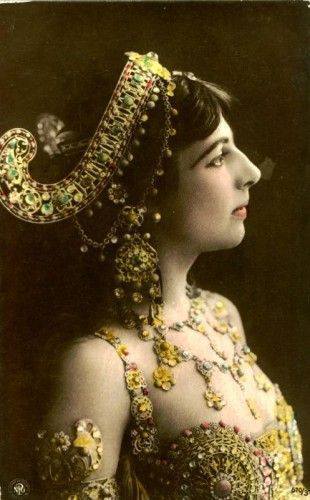
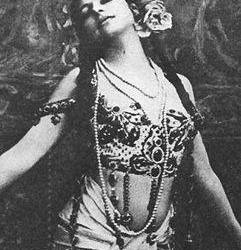
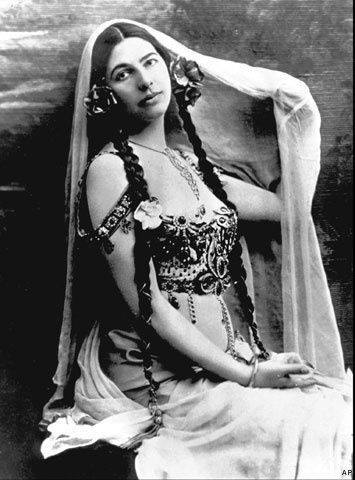
IL RACCONTO DELL'IMMAGINE - di Gianpiero Menniti
CONCUPISCENZA
Il potere della danza non è come il potere della parola.
Lo supera.
E' come l'arte.
Occupa lo spazio, disegnandolo con il corpo.
Così, affascinando, s'impadronisce della mente.
Esperienza irripetibile di un'immagine senza tempo, diviene desiderio di presenza.
Perché capace di sfiorare le corde inaccessibili della pulsione.
- Mata Hari, 7 agosto 1876 - 15 ottobre 1917
13 notes
·
View notes
Text
Margaretha Geertruida Zelle,
nome d’arte
Mata Hari (1876-1917).
In malese Mata Hari significa "giorno" o "occhio del sole". Foto: Robert Hunt.
Nelle prime ore del 15 ottobre 1917, Mata Hari, una delle spie più famose del 20° secolo, fu svegliata nella sua cella di prigione. Era giunta la sua ora. Su sua richiesta fu battezzata e, data una penna, inchiostro, carta e buste, Mata Hari fu autorizzata a scrivere due lettere, che la direzione del carcere non spedì mai. Scarabocchiò frettolosamente gli appunti prima di indossare le calze nere, i tacchi alti e un mantello di velluto bordato di pelliccia.
Dalla prigione di Saint-Lazare fu trasferita al castello di Vincenne, alla periferia di Parigi. Erano appena passate le 5:30 quando affrontò il plotone di esecuzione composto da 12 fucilieri. Le venne offerto una benda per gli occhi, ma lei rifiutò: la leggenda narra che mentre gli ufficiali prendevano la mira, Mata Hari mandò loro un bacio. Dei dodici colpi, solo quattro la colpirono. Nessuno reclamò il corpo, il quale fu trasportato all'Istituto di medicina legale di Parigi, sezionato e in seguito sepolto in una fossa comune.
Nata nel 1876 nei Paesi Bassi, Margaretha era stava svezzata nell'agio, ma si trovò presto a dover fare i conti con l'indigenza dopo il tracollo finanziario della sua famiglia. Nel1890 il padre l’abbandonò e la madre morì l’anno dopo. Lasciata la casa natale il padrino la mandò in un collegio per future maestre, ma le eccessive attenzioni del direttore la costrinsero ad abbandonare la scuola .
A 19 anni Margaretha , quattro mesi dopo aver risposto a un annuncio di cuori solitari, si ritrovò sposata con Rudolph "John" MacLeod, un ufficiale alcolizzato dell’esercito delle indie orientali che aveva quasi il doppio della sua età. Il matrimonio non fu dei più felici. Il marito aveva pochi soldi e molti debiti e un buon numero di relazioni extraconiugali.
Nel 1897, in viaggio verso Sumatra con il figlio Norman-John e il marito, Margaretha scoprì che quest’ultimo le aveva trasmesso la sifilide.
Nel 1898, la coppia ebbe una bambina, Louise Jeanne, ma la loro relazione non migliorò.
La famiglia venne sconvolta dalla tragedia della perdita del piccolo Norman, che morì l’anno dopo, probabilmente avvelenato (forse a causa di medicinali o per vendetta). Nonostante gli sforzi per riprendersi dal grave lutto, la vita continuò a essere insopportabile per la giovane madre, che arrivò a sfiorare la follia.
Nel 1902, Margaretha e il marito si separarono definitivamente; lui ottenne la custodia della bambina, mentre lei si trasferì a Parigi per tentare la fortuna.
Consacrata, il 18 agosto 1905, dopo l'esibizione al teatro dell'Olympia, come l’«artista sublime», Mata Hari iniziò una tournée che fu un vero e proprio trionfo, venendo incontro alla fantasia, ingenua e torbida e al fascino proibito dell'erotismo. Alla fine del 1911 raggiunse il vertice del riconoscimento artistico al Teatro alla Scala di Milano.
Mata Hari era considerata la donna più affascinante e desiderabile di Parigi: frequentava uomini altolocati che la riempivano di regali costosi solo per godere della sua compagnia.
Nel 1914 si recò a Berlino per un nuovo spettacolo, ma quello spettacolo non ebbe mai luogo: con l'assassinio del principe ereditario austriaco, finì la Belle Epoque ed ebbe inizio la Prima guerra mondiale.
Mata Hari viaggiava molto e, per questo, catturò l’attenzione del mondo del controspionaggio. Nell’autunno del 1915, la danzatrice ricevette una cospicua somma di denaro dai tedeschi per svolgere attività spionistica a favore della Germania. Mata Hari accettò e così venne arruolata nelle file segrete del Kaiser; agente H21 fu il nome in codice che le venne assegnato.
Tuttavia, giunta in Francia, la danzatrice pensa di poter guadagnare ancor di più arruolandosi anche per i servizi segreti francesi.
Inizia la doppia vita dell’agente Mata Hari costretta a tenere i rapporti con due nazioni avversarie, a muoversi in due paesi lavorando per entrambi.
Su di lei sono puntati gli occhi dei servizi segreti di tre paesi: i Deuxième Bureau di Parigi, i primi a insospettirsi e a pedinarla, gli Abteilung IIIb di Berlino e infine i Secret Intelligence Service di Londra. I tedeschi sono i primi ad avere le prove del suo tradimento e vogliono che anche i francesi la scoprano per poterla così eliminare.
L'ipotesi che i tedeschi avessero deciso di disfarsi di Mata Hari - rivelandola al controspionaggio francese come spia tedesca - poggia sull'utilizzo da loro fatto in quell'occasione di un vecchio codice di trasmissione, già abbandonato perché decifrato dai francesi, nel quale Mata Hari veniva ancora identificata con la sigla H21. In tal modo, i messaggi tedeschi furono facilmente decifrati dalla centrale parigina di ascolto radio della Torre Eiffel.
Il 2 gennaio 1917 Mata Hari rientrò a Parigi e la mattina del 13 febbraio venne arrestata nella sua camera dell'albergo Elysée Palace e rinchiusa nel carcere di Saint-Lazare.
Durante il processo, i tanti ufficiali francesi dei quali fu amante, interrogati, la difesero, dichiarando di non averla mai considerata una spia.
Fu giustiziata nelle prime ore del 15 ottobre 1917. Aveva 41 anni.
Immagine: Mata Hari posa con un vestito di pizzo agli inizi del XX secolo
Fonti:
enciclopediadelledonne di Ludovica Midalizzi
Wikipedia
storicang matahari, di Pat Shipman
i

6 notes
·
View notes
Text
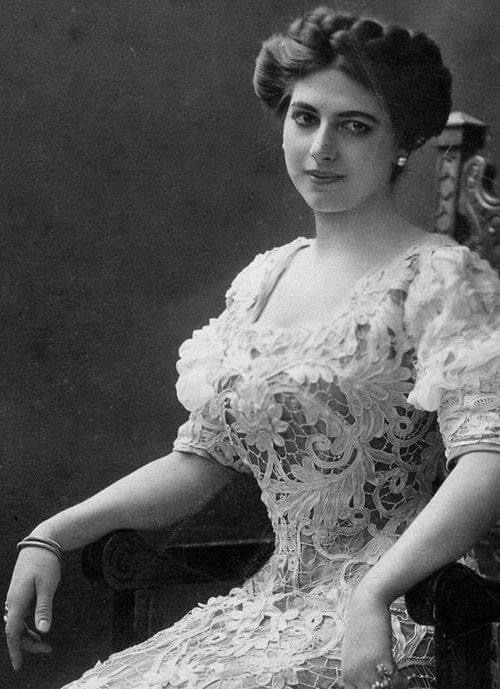
MATI HARI
Margaretha Geertruida MacLeod (née Zelle; 7 August 1876 – 15 October 1917), better known by the stage name Mata Hari , was a Dutch exotic dancer and courtesan who was convicted of being a spy for Germany during World War I. Professor Shipman, a noted scholar, stated "he believed she was innocent" and condemned only because the French Army needed a scapegoat. She was executed by firing squad in France.
17 notes
·
View notes
Text
Mata Hari
Mata Hari (1876-1917) était une danseuse de danse orientale, une séductrice. Au faîte de sa gloire, elle était adulée dans toute l’Europe. Elle connut néanmoins un destin tragique. Accusée d’espionnage par le gouvernement français, elle fut exécutée durant la Première Guerre mondiale.

View On WordPress
4 notes
·
View notes
Text
ESTA BELLA MUJER SE CONVIRTIÓ EN LEYENDA
Nacida en agosto de 1876, hija de un modesto sombrerero llamado Adam Zelle, apodado "el Barón" por sus delirios de grandeza, Margaretha tuvo una infancia tan feliz como inadecuada. A los 6 años, llegó al colegio más caro de la ciudad en una carroza tirada por cabritas blancas enjaezadas con cintas.
De adolescente, ingresó al Instituto Leyden de Ámsterdam. Con una exótica belleza heredada de su madre, pronto comprendió el poder que poseía. La leyenda cuenta que el director del centro, enamorado de ella a sus 16 años, la expulsó, y se fue a vivir con su tío. Para escapar de él, se casó a los 19 años con el Capitán Rudolf Mac Leod, acompañándolo a las Colonias de Java y Sumatra, donde aprendió las danzas nativas balinesas.
Después de cinco años de matrimonio, dejó a su marido alcohólico y regresó a Europa, a la París de la Belle Époque, donde, aprovechando su natural y enigmática belleza, inició una nueva vida como Mata Hari. Su audacia en los escenarios y su conocimiento de los sensuales bailes malayos la llevaron de ambientes sórdidos a lujosos cabarets y teatros, convirtiéndola en mito sexual parisino y cortesana de lujo en toda Europa.
Durante la Primera Guerra Mundial, su acceso a altos jefes militares le proporcionó información privilegiada sobre la política y el desarrollo de la guerra. Estos juegos peligrosos serían su perdición. Llamando la atención del Estado Mayor Alemán, fue captada como espía en la primavera de 1916, aceptando también convertirse en agente al servicio de Francia.
Descubierta por el espionaje británico, fue denunciada y detenida por las autoridades francesas en febrero de 1917. En un juicio sumarísimo y casi sin pruebas, fue condenada a muerte como chivo expiatorio de los desastres del Ejército Francés.
La madrugada del 15 de octubre, en el castillo de Vincennes, se cumplió la sentencia. No permitió que le vendaran los ojos ni la ataran, lanzando un beso de despedida a sus ejecutores. Así terminó su vida y comenzó su fascinante leyenda.
Fuente: La historia es cultura

1 note
·
View note
Text
Heymans Charles S. - La vraie Mata Hari
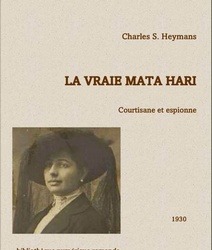
Heymans Charles S. - La vraie Mata Hari: Mais qui était vraiment Mata Hari ? Hollandaise, née Margaretha Geertruida Zelle le 7 août 1876 à Leeuwarden, tant de choses ont été dites et écrites à son sujet. Une chose est certaine, Mata Hari a vécu une vie hors du commun : courtisane, danseuse exotique, espionne en faveur de l’Allemagne ce qui lui vaudra d’être fusillée par les Français en 1917.
Vérités, contre-vérités, on s’y perd un peu ; avec elle on navigue entre réalité, mythes et légendes. Toutefois, dans ce livre, Charles Heymans arrive à nous éclairer sur la vie et la personnalité de Mata Hari. L’auteur a en effet fait preuve de beaucoup de persévérance pour décrypter le vrai du faux, grâce a une longue enquête étayée par une documentation fiable. Charles Heymans justifie ses propos sur base d’éléments concrets : la réalité plutôt que le mythe ou la légende. Alors Mata Hari, victime ou coupable ? Vous les saurez en lisant cet essai passionnant sur la vie d’une femme hors normes.
Charles S. Heymans, journaliste, écrivain, traducteur, rédacteur en chef, critique littéraire, enseignant, grand voyageur, est un Hollandais éclectique et polyglotte. Début des années 20 il s’installe à Paris, donnant entre autres, à la revue Nederland, des études sur Anatole France, Pierre Loti, Maeterlinck, Willette, Sarah Bernhardt, Eléonore Duse, et bien d’autres.
Téléchargements : ePUB - PDF - PDF (Petits Écrans) - Kindle-MOBI - HTML - DOC/ODT
Read the full article
1 note
·
View note
Text
On This Day In History
August 7th, 1876: Dutch sex worker and spy Mata Hari was born.
87 notes
·
View notes
Text
'My dance is a sacred poem in which each movement is a word and whose every word is underlined by music. The temple in which I dance can be vague or faithfully reproduced, for I am the temple.' - Mata Hari
Mata Hari (1876-1917) was a Dutch professional dancer and mistress who became a spy for France during World War I. Suspected of being a double agent, she was executed in 1917.

0 notes
Text
On This Day In History
September 7th, 1876: Dutch exotic dancer and spy Mata Hari was born.
0 notes
Text
Mata Hari: Vita e Mistero della spia e ballerina
Mata Hari è stata una delle spie più famose e controverse del XX secolo. Il suo vero nome era Margaretha Geertruida Zelle, ed è nata l'7 agosto 1876 a Leeuwarden, nei Paesi Bassi. La sua vita è stata segnata da avventure, intrighi e tragica fine.
Primi Anni di Vita
Mata Hari proveniva da una famiglia benestante e aveva origini indonesiane da parte di madre. Ha trascorso la sua giovinezza nei Paesi Bassi e all'età di 18 anni, ha sposato Rudolf MacLeod, un ufficiale dell'esercito olandese. La coppia ha avuto due figli e ha vissuto in diverse località, tra cui l'Indonesia.
Diventare Mata Hari
Il matrimonio di Mata Hari si rivelò infelice, e la coppia divorziò nel 1907. Dopo il divorzio, Margaretha abbracciò una nuova identità e divenne Mata Hari, una ballerina esotica e cortigiana, danzando nei principali teatri d'Europa e diventando celebre per le sue esibizioni provocanti e sensuali. Il suo nome d'arte "Mata Hari" significa "occhio del giorno" in malese.
Spionaggio durante la Prima Guerra Mondiale
La fama di Mata Hari come ballerina la portò in contatto con molte persone influenti, tra cui ufficiali militari. Durante la Prima Guerra Mondiale, le circostanze la portarono a essere coinvolta nell'attività di spionaggio. Fu accusata di lavorare sia per i servizi segreti tedeschi che per quelli francesi. Tuttavia, l'entità esatta del suo coinvolgimento rimane oggetto di controversie.
Arresto e Processo di Mata Hari
Nel 1917, fu arrestata dall'intelligence francese con l'accusa di essere una spia tedesca. Il processo fu anche ampiamente pubblicizzato e attirò l'attenzione internazionale. Nonostante la mancanza di prove concrete, fu condannata a morte.
Esecuzione
Il 15 ottobre 1917, Mata Hari fu fucilata davanti al plotone d'esecuzione. La sua morte è stata circondata da polemiche, con alcune teorie che suggeriscono che potrebbe essere stata vittima di un ingiusto processo orchestrato per motivi politici,
Foto di Gerd Altmann da Pixabay
Read the full article
0 notes
